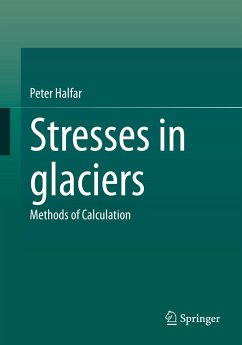In this way, approximately realistic solutions can be found despite a recurring problem: the information deficits that are unavoidable due to the difficulty of exploring glaciers. This issue is demonstrated by the example of stagnating glaciers.
For horizontally isotropic homogeneous tabular iceberg models, even mathematically exact unambiguous solutions of all relevant conditions are presented.
All calculations use only elementary arithmetic operations, differentiations and integrations. The mathematical fundamentals are presented in detail and explained in many application examples. The integral operators specific to calculations of stresses facilitate the mathematical considerations. The stand-alone text allows the reader to understand what is involved even without considering the formulas.
The author
Peter Halfar is a theoretical physicist. He also developed a model of the movement of large ice caps (1983), which is still in use today.
This book is a translation of an original German edition. The translation was done with the help of artificial intelligence (machine translation by the service DeepL.com). A subsequent human revision was done primarily in terms of content, so that the book will read stylistically differently from a conventional translation.
Dieser Download kann aus rechtlichen Gründen nur mit Rechnungsadresse in A, B, BG, CY, CZ, D, DK, EW, E, FIN, F, GR, HR, H, IRL, I, LT, L, LR, M, NL, PL, P, R, S, SLO, SK ausgeliefert werden.









